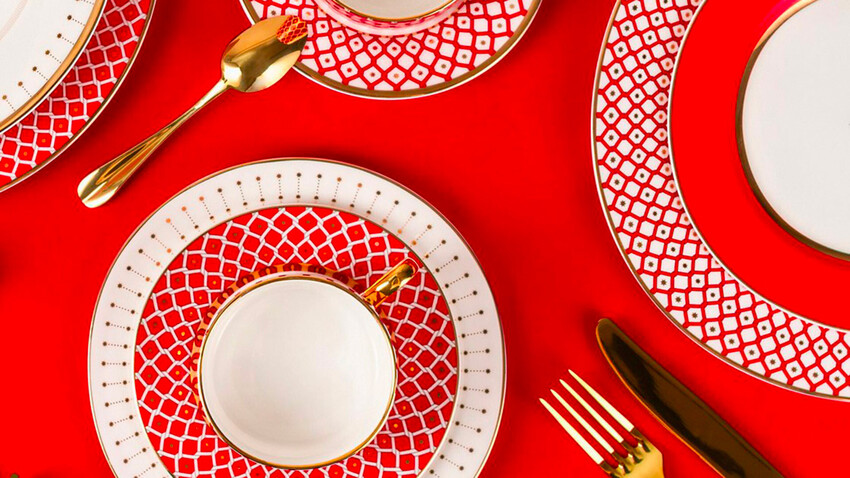
In 2024, the Imperial Porcelain Factory celebrates its 280th anniversary. Its works have always met the changing fashions and demands of the time. The design of porcelain has gone from the French classics to Art Nouveau to avant-garde “revolutionary” porcelain.
Today, artists are still coming up with new shapes and designs (paying homage to historical drawings). They also recreate porcelain pieces based on sketches from tsarist times, reinterpreting them in a new way. We’ve highlighted the most incredible ones.
One of the first large-scale projects of the factory was the ‘Her Majesty’s Own Service’, made in 1752-1764 for Elizabeth Petrovna. The items were painted with gold and pink openwork netting, in the weaves of which tiny pink flowers were drawn.
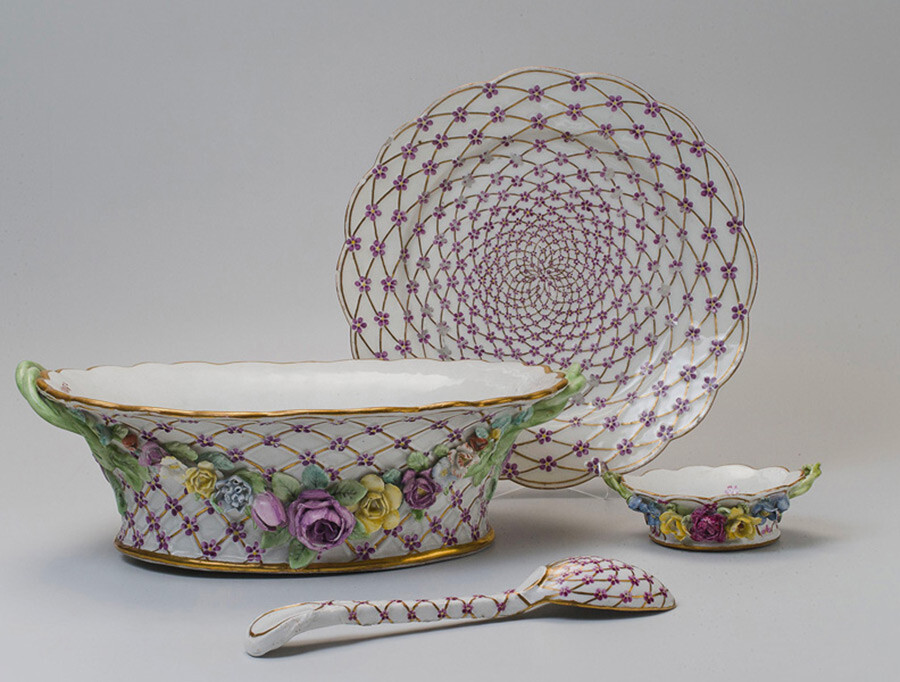
‘Her Majesty’s Own Service’
The Hermitage MuseumIn 1944, for the 200th anniversary of the factory, artist Anna Yatskevich created a new design, which is believed to have been inspired specifically by this exactly historic service. The cobalt net in the paintings was “tied” with gold bows.
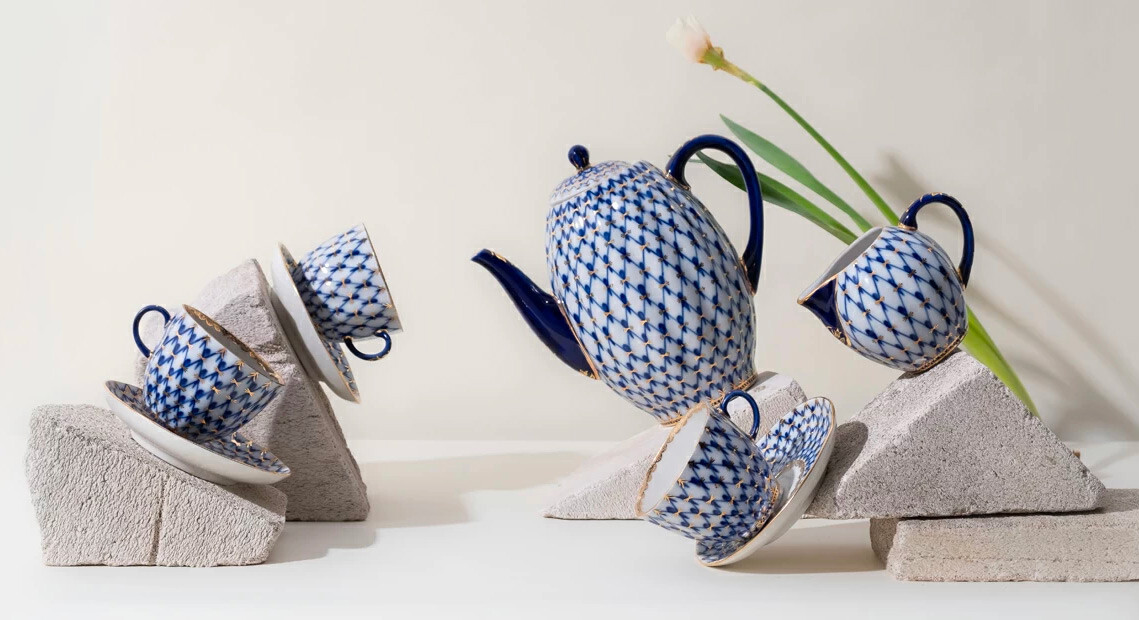
‘Cobalt net’
Imperial Porcelain ManufactoryThis is still one of the most popular and recognizable designs of the Imperial Porcelain factory. Today, they also produce modern designs inspired by the “cobalt net” - red ‘Scarlet’, pink ‘Blues’, sky-blue ‘Azure’ and others.
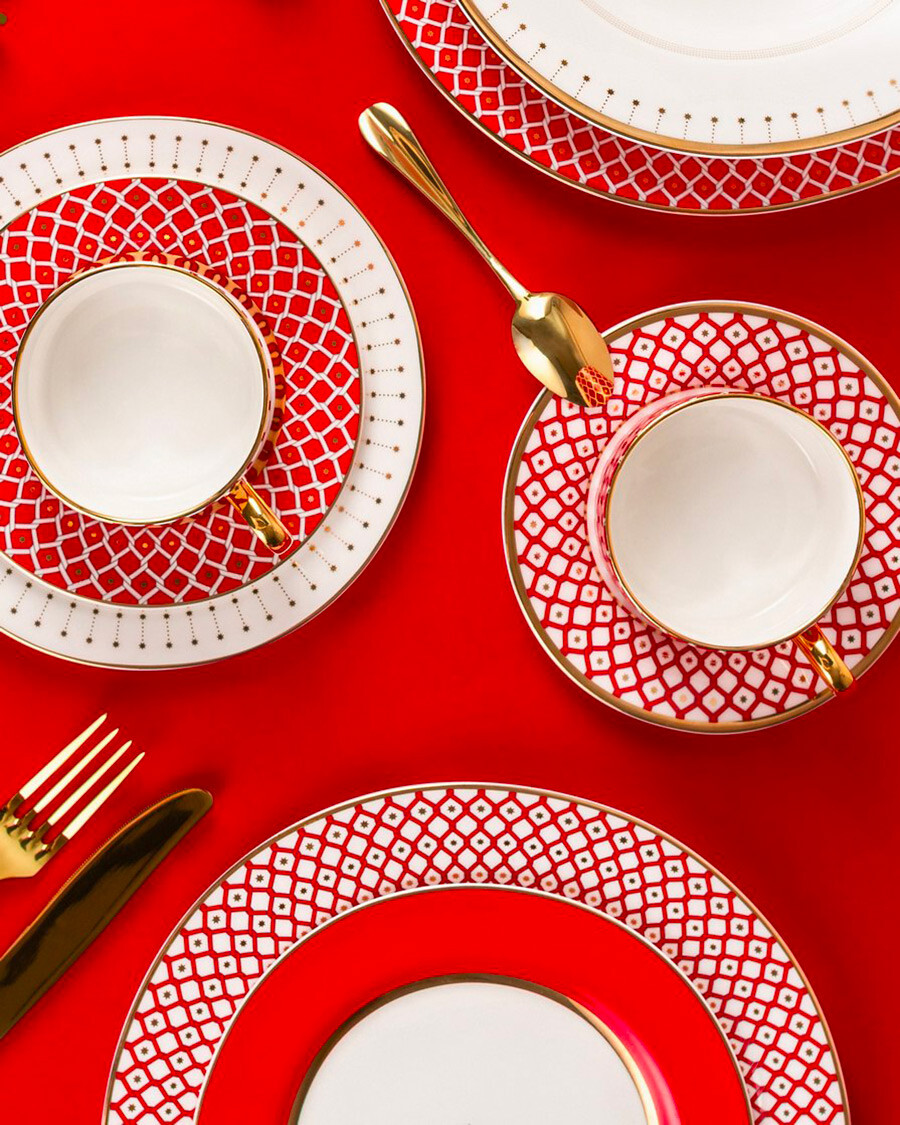
‘Scarlet’ collection
Imperial Porcelain ManufactoryIn 1824, the Imperial Porcelain Factory made the ‘Babigon’ set for the Great Peterhof Palace. All items were decorated with a plant ornament in the shape of a ribbon of golden leaves on a gray background.
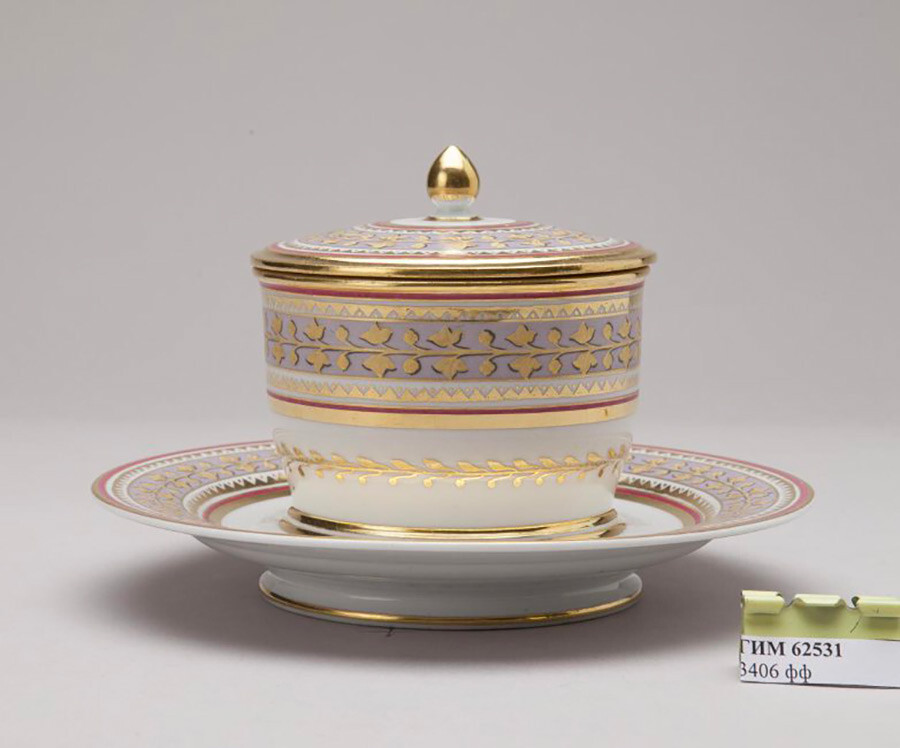
Butter dish with lid from the ‘Babigon’ set
State Historical MuseumThe modern replica was created in 1996 and bears the name ‘Belveder’ in honor of the palace of the same name in Peterhof, where the historical set was transferred to in the mid-19th century.
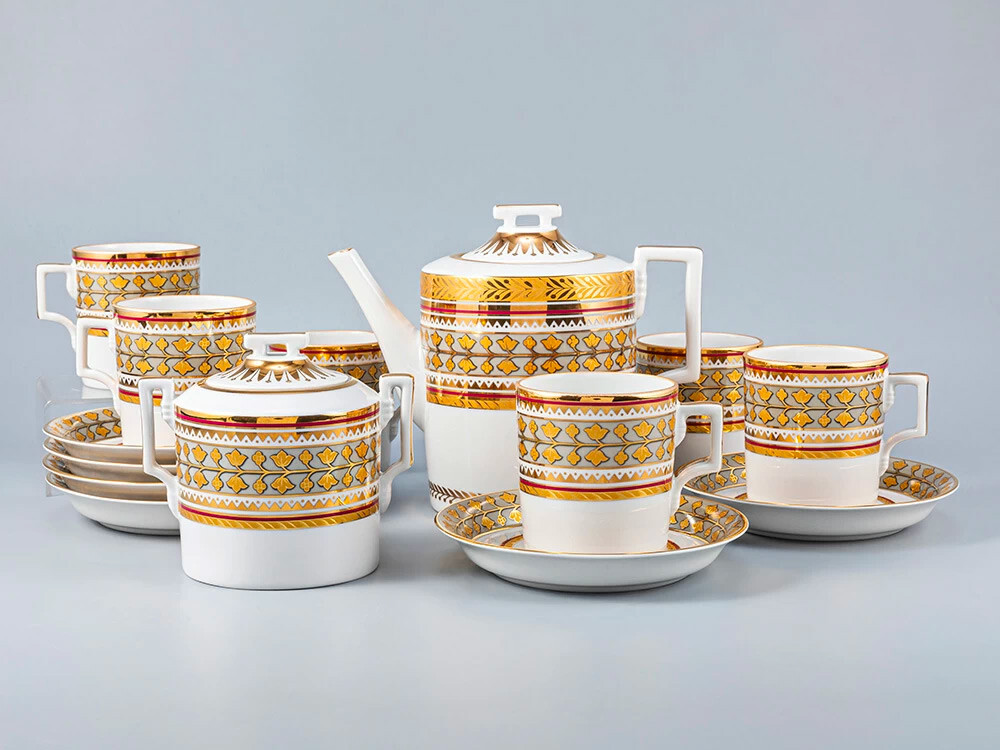
‘Belveder’ collection inspired by the ‘Babigon’ set
Imperial Porcelain ManufactoryIn 1828, the factory produced a ‘Golden’ set for Empress Maria Feodorovna. The items were painted in blue and green colors with floral ornaments and decorated with gold and filigree engravings with a semi-precious agate. The wife of Paul I used it as a ceremonial set in the Gatchina Palace.
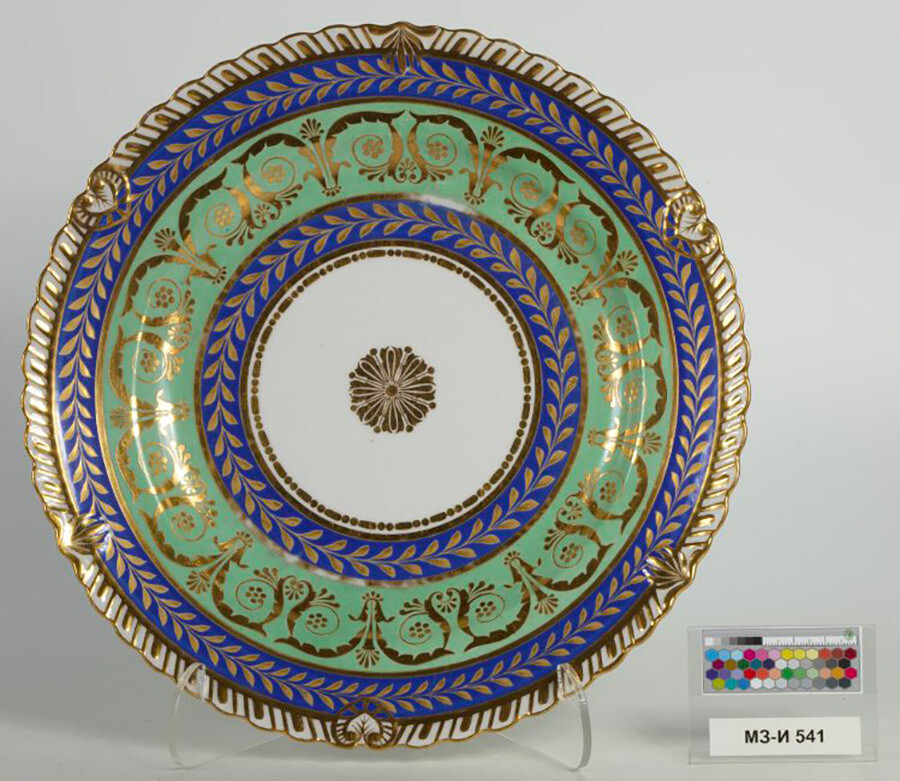
A plate from the ‘Golden’ set
The Hermitage MuseumBased on museum samples, the modern factory's artists recreated the ‘Golden’ set as a tribute to the heyday of the factory in the first third of the 19th century, when it produced large ceremonial sets for the royal palaces.
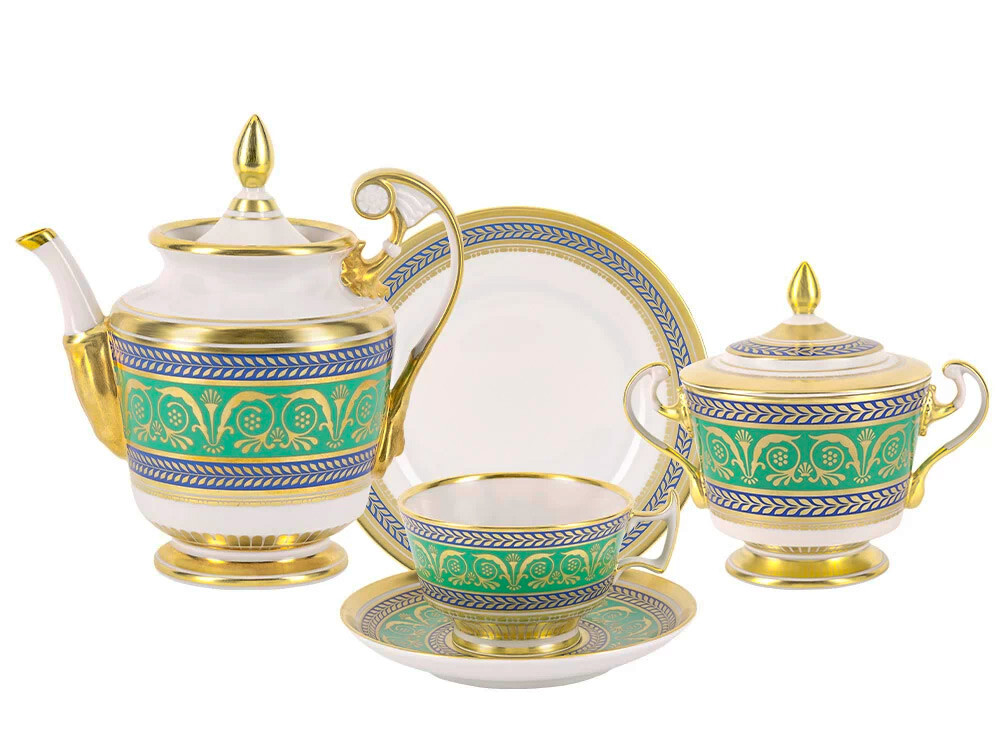
The modern ‘Golden’ set
Imperial Porcelain ManufactoryIn the late 1820s, the factory created a set for the ‘Cottage’ palace in the ‘Alexandria’ park in Peterhof. Elegant cups and sugar bowls stood on the table of Alexandra Feodorovna, the wife of Nicholas I, who was very fond of drinking coffee on the numerous verandas and balconies of the residence.
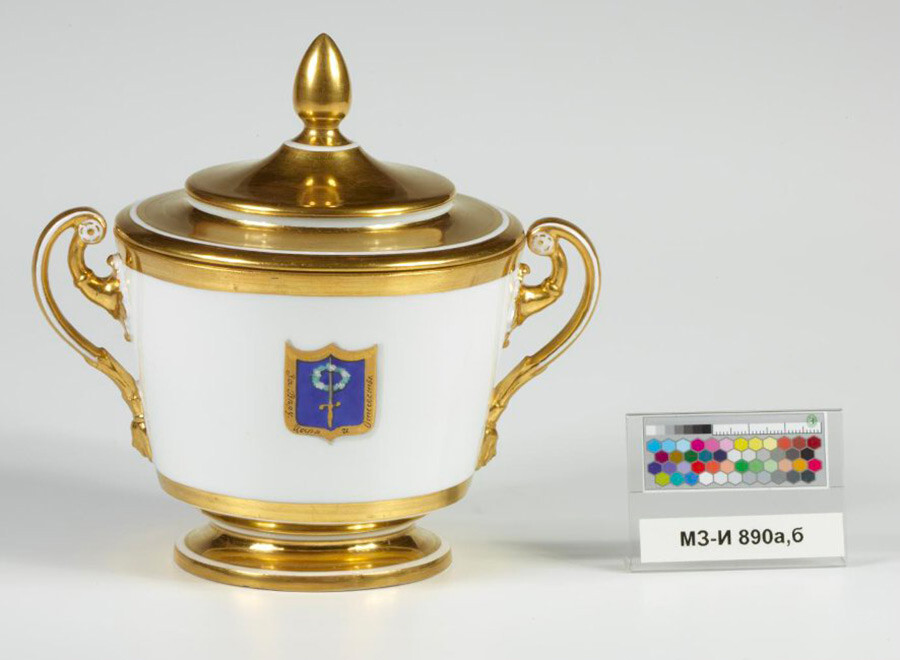
Sugar bowl with lid from ‘His Majesty Own Service’ from the ‘Cottage’ Palace
The Hermitage MuseumThe modern ‘Cottage’ collection recreates exactly this historical design. The items are decorated with the coat of arms of Alexandria: a golden sword passed through a wreath of white roses on a background of a blue knight's shield.
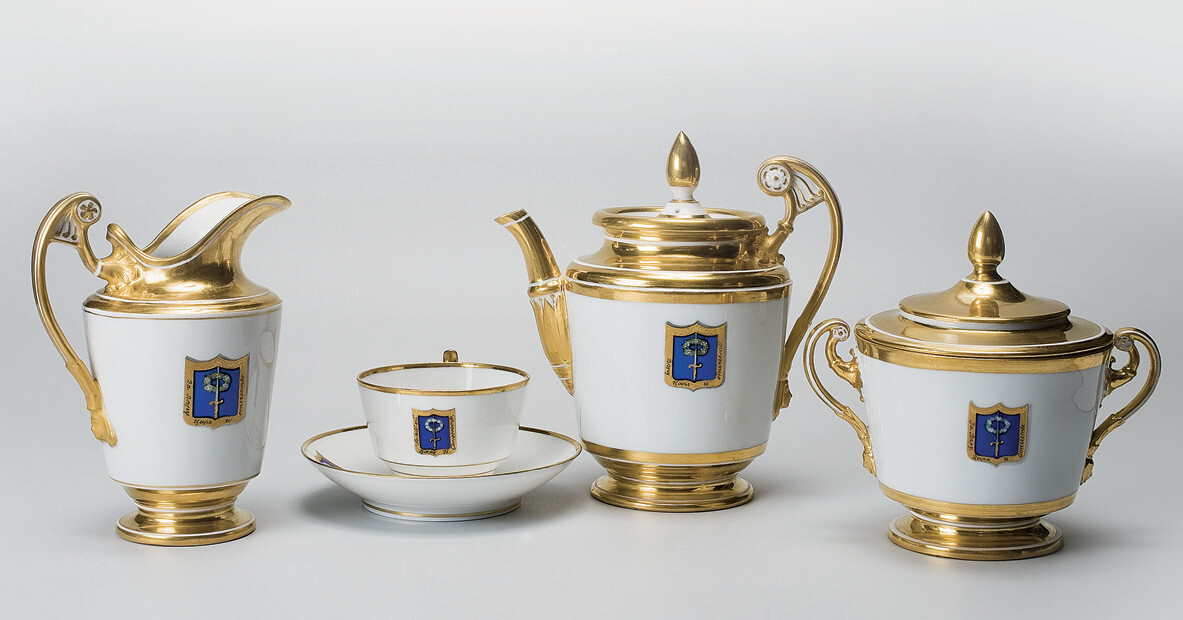
The modern ‘Cottage’ collection
Imperial Porcelain ManufactoryIn addition to the basic set for the ‘Cottage’ palace, from the 1830s, a whole series of plates were made with a pattern in the form of Gothic stained glass roses. This was a reference to the neo-Gothic style, which was fashionable and favored by Nicholas I, in which the palace itself was built.
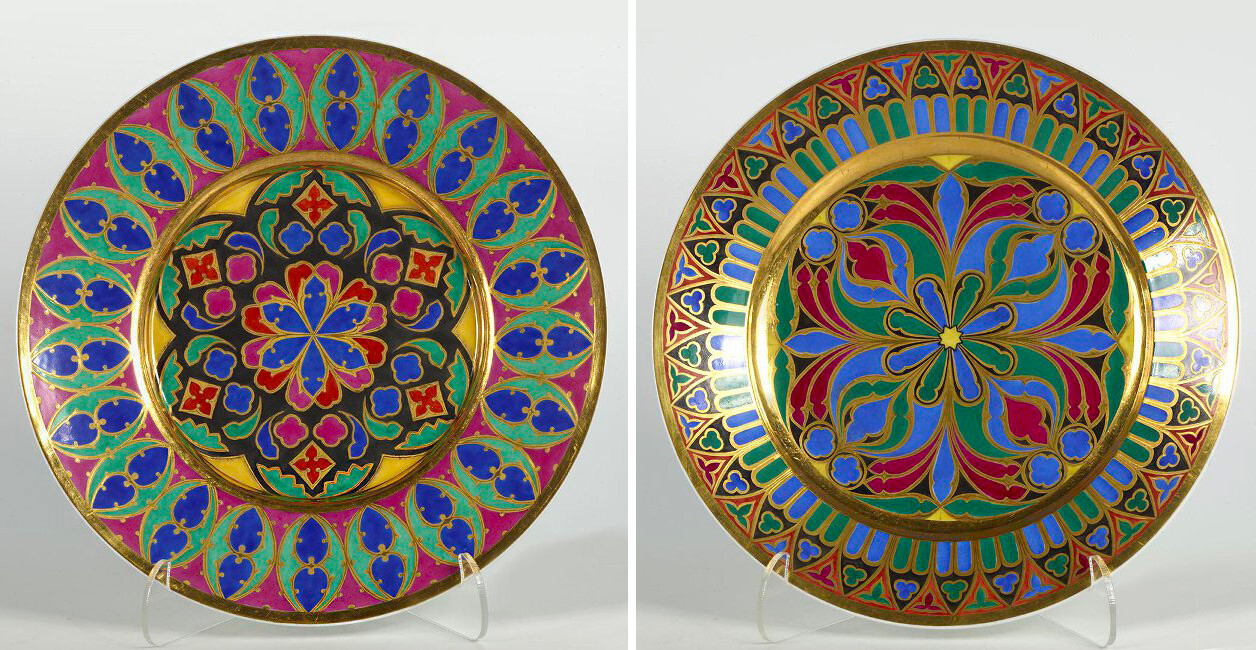
Gothic plates from the ‘Cottage’ palace
The Hermitage MuseumThe modern premium Gothic collection repeats the Gothic patterns of its historical predecessor on cups, glasses and other tea set items.
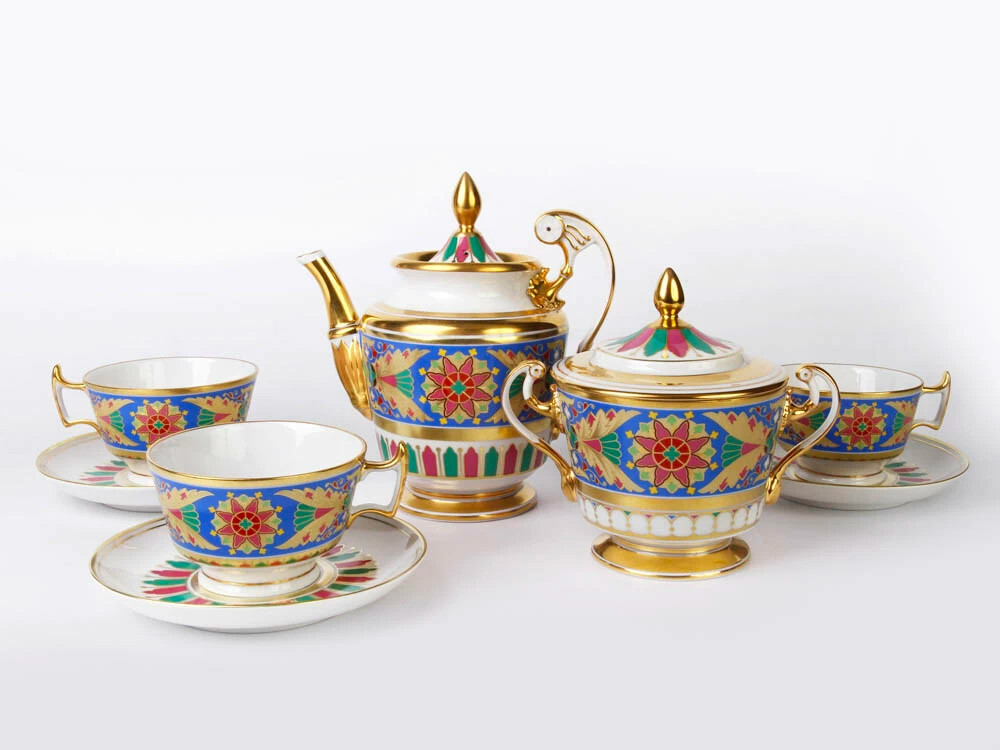
The modern ‘Gothic’ collection
Imperial Porcelain ManufactoryDear readers,
Our website and social media accounts are under threat of being restricted or banned, due to the current circumstances. So, to keep up with our latest content, simply do the following:
If using any of Russia Beyond's content, partly or in full, always provide an active hyperlink to the original material.
Subscribe
to our newsletter!
Get the week's best stories straight to your inbox